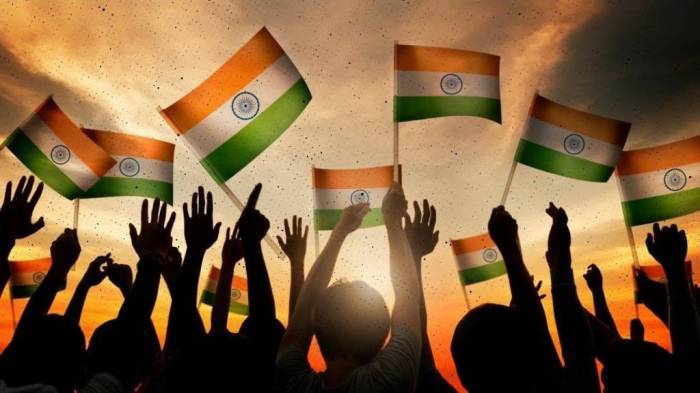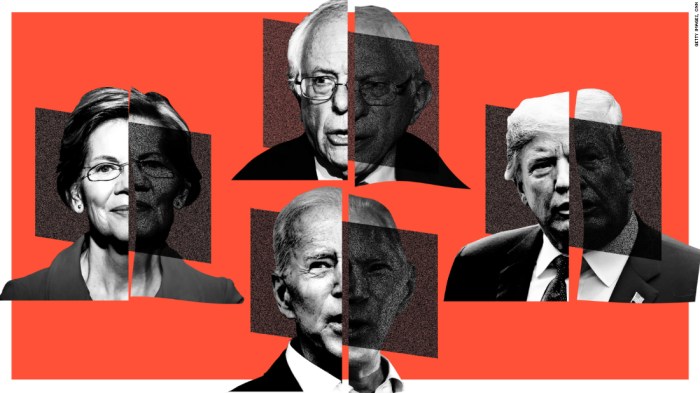India Elections Deepfakes: A Growing Threat to Democracy. The rise of deepfakes, hyperrealistic videos that can manipulate reality, has become a significant concern in Indian elections. These fabricated videos, often featuring politicians saying or doing things they never actually did, can sway public opinion, spread misinformation, and even influence election outcomes.
The potential for deepfakes to disrupt democratic processes in India is undeniable. They can erode trust in political leaders, sow discord among voters, and undermine the integrity of elections. As deepfake technology continues to advance, it’s crucial to understand the implications of this technology and develop strategies to mitigate its impact.
The Rise of Deepfakes in Indian Elections
The Indian political landscape is increasingly becoming a battleground for deepfakes. These AI-generated videos, which can convincingly portray individuals saying or doing things they never did, are posing a significant threat to democratic processes. While deepfakes have been around for a while, their use in elections is becoming more prevalent, raising concerns about their potential to manipulate public opinion and spread misinformation.
Types of Deepfakes Used in Indian Elections
Deepfakes are becoming increasingly sophisticated, and their use in Indian elections is evolving. They are used to manipulate public opinion and spread misinformation, impacting the political discourse and the integrity of elections.
- Audio Deepfakes: These deepfakes manipulate audio recordings, making it appear as if someone is saying something they never did. For example, a deepfake could be used to create a recording of a politician making a controversial statement that they never actually made. This could be used to damage their reputation or influence voters’ perceptions.
- Video Deepfakes: These deepfakes manipulate video footage, making it appear as if someone is doing something they never did. For example, a deepfake could be used to create a video of a politician engaging in inappropriate behavior or making a speech they never actually delivered. This could be used to discredit the politician or sway voters’ opinions.
- Social Media Deepfakes: Deepfakes are increasingly being used on social media platforms to spread misinformation and influence public opinion. These deepfakes can be used to create fake news stories, manipulate public perception of events, and spread propaganda. For example, a deepfake could be used to create a video of a politician making a false claim about an opponent or a policy.
Examples of Deepfakes Used to Manipulate Public Opinion
There have been several instances where deepfakes have been used to manipulate public opinion and spread misinformation in Indian elections.
- The 2019 Indian General Election: During the 2019 Indian general election, several deepfakes were circulated online, targeting politicians from different parties. These deepfakes were often used to spread false information or create negative perceptions about the targeted politicians. For example, a deepfake video was circulated showing a prominent politician making a controversial statement that they never actually made. This video went viral on social media and caused significant damage to the politician’s reputation.
- The 2020 Delhi Assembly Election: In the 2020 Delhi Assembly election, deepfakes were used to spread misinformation about the candidates and their policies. For example, a deepfake video was circulated showing a candidate making a false promise about providing free electricity to all residents of Delhi. This video was shared widely on social media and influenced the opinions of some voters.
Impact of Deepfakes on Indian Democracy
Deepfakes, with their ability to convincingly mimic real individuals, pose a significant threat to democratic processes in India. These synthetic media creations can manipulate public perception, erode trust in institutions, and potentially influence election outcomes. The impact of deepfakes on Indian democracy is a complex and evolving issue that requires careful consideration and proactive measures.
Undermining Public Trust
Deepfakes can undermine public trust in political leaders and institutions by creating a climate of uncertainty and suspicion. When people are unsure about the authenticity of what they see and hear, it becomes difficult to discern truth from falsehood. This erosion of trust can lead to a decline in civic engagement and participation in democratic processes.
- For example, a deepfake video of a prominent politician making a controversial statement could damage their reputation and credibility, even if the video is fabricated. This could lead to a loss of public trust in the politician and their party, potentially affecting their electoral prospects.
- Similarly, deepfakes could be used to create false narratives about political events or policies, further undermining public trust in the government and its institutions. This could lead to a rise in skepticism and distrust towards official sources of information, making it difficult to maintain a stable and functioning democracy.
Influence on Election Outcomes, India elections deepfakes
Deepfakes have the potential to influence election outcomes by manipulating voter behavior. They can be used to spread misinformation, create negative campaigns against opponents, and even sway voters towards specific candidates.
- For instance, a deepfake video of a candidate making a racist or sexist remark could damage their campaign and turn voters against them. This could be particularly effective in close elections where even a small shift in voter sentiment can have a significant impact on the outcome.
- Deepfakes can also be used to spread false information about a candidate’s policies or track record, potentially misleading voters and influencing their decision at the polls. This could lead to a situation where voters are making decisions based on fabricated information, undermining the integrity of the electoral process.
Public Awareness and Education: India Elections Deepfakes
In the digital age, where information spreads like wildfire, it’s crucial to equip citizens with the tools to discern truth from fiction. Deepfakes, a powerful technology capable of manipulating reality, pose a significant threat to democratic processes. A robust public awareness campaign is vital to empower voters and safeguard the integrity of elections.
Strategies for Public Awareness
Educating the public about deepfakes and their potential impact is paramount. A comprehensive campaign should employ a multi-pronged approach, targeting various audiences and utilizing diverse channels.
- Target Audience: The campaign should target a wide range of individuals, including voters, policymakers, journalists, and social media users.
- Message: The message should be clear, concise, and easily understandable, highlighting the potential dangers of deepfakes and emphasizing the importance of critical thinking.
- Channels: The campaign should leverage various channels, including social media platforms, traditional media outlets, educational institutions, and community organizations.
Promoting Media Literacy and Critical Thinking
Empowering citizens with media literacy skills is crucial to combat the spread of misinformation. This involves teaching individuals how to critically evaluate information, identify potential manipulation, and verify the authenticity of online content.
- Fact-Checking Tools: Encourage the use of fact-checking websites and tools to verify information.
- Source Verification: Teach individuals to critically evaluate the source of information and assess its credibility.
- Reverse Image Search: Demonstrate the use of reverse image search engines to identify the origin and context of images.
Campaign Table
The following table Artikels key elements of a public awareness campaign:
| Target Audience | Message | Channels |
|---|---|---|
| Voters | Deepfakes can manipulate reality and influence your vote. Be cautious and verify information before believing it. | Social media, television commercials, online ads, community forums |
| Policymakers | Deepfakes pose a significant threat to democratic processes. We need to develop regulations and safeguards to protect elections. | Policy briefings, government websites, public hearings |
| Journalists | Deepfakes can undermine trust in the media. We need to develop best practices for reporting on deepfakes and ensuring the accuracy of information. | Journalism workshops, industry conferences, online resources |
| Social Media Users | Be aware of the potential for deepfakes on social media. Verify information before sharing it. | Social media campaigns, influencer partnerships, educational videos |
International Perspectives
The global landscape of elections has witnessed a growing concern over the use of deepfakes, and India is not alone in facing this challenge. Understanding how other nations are tackling this issue can provide valuable insights for India’s own efforts.
Comparative Analysis of Deepfake Use in Elections
The use of deepfakes in elections has been observed in various countries, with varying degrees of sophistication and impact. While India has witnessed deepfakes targeting political figures, other countries have seen more extensive deployment, including fabricated news reports and manipulated audio recordings.
- United States: The 2020 US presidential election saw the emergence of deepfakes targeting both candidates, with manipulated videos circulating online. These deepfakes, while not widespread, highlighted the potential for deepfakes to influence public opinion and undermine trust in legitimate information.
- China: China has been grappling with deepfakes used for propaganda purposes, including fabricated videos of political leaders. The Chinese government has taken steps to combat the spread of deepfakes, including regulations and penalties for creating and disseminating them.
- European Union: The EU has recognized the threat posed by deepfakes and has initiated discussions on regulations to address their use. The EU’s General Data Protection Regulation (GDPR) already provides some legal framework for protecting individuals from the unauthorized use of their images and voices.
International Efforts to Regulate Deepfakes
The international community has recognized the need for coordinated efforts to address the challenge of deepfakes. Several initiatives and regulations have been proposed and implemented, focusing on various aspects of the issue.
- United Nations: The UN has called for international cooperation to address the misuse of emerging technologies, including deepfakes, and has emphasized the need for ethical guidelines and responsible use.
- Council of Europe: The Council of Europe has adopted a recommendation on combating online disinformation, which includes provisions for addressing deepfakes and other forms of manipulated content. The recommendation encourages member states to develop national strategies for combating disinformation and to cooperate internationally on this issue.
- OECD: The Organisation for Economic Co-operation and Development (OECD) has developed a set of principles for responsible governance of artificial intelligence (AI), which includes guidelines for mitigating the risks associated with deepfakes. The principles emphasize transparency, accountability, and human oversight in the development and deployment of AI technologies.
Best Practices from Other Nations
Several countries have implemented measures to combat the use of deepfakes in elections. These best practices offer valuable lessons for India.
- Education and Awareness: Raising public awareness about the existence and detection of deepfakes is crucial. Countries like the United States and the United Kingdom have launched public education campaigns to help citizens identify and evaluate online content.
- Collaboration with Social Media Platforms: Working with social media platforms to identify and remove deepfakes is essential. Countries like France and Germany have established partnerships with platforms like Facebook and Twitter to address the spread of disinformation, including deepfakes.
- Legislative Frameworks: Establishing legal frameworks that address the creation and dissemination of deepfakes is vital. Countries like South Korea and Singapore have enacted laws that criminalize the use of deepfakes for malicious purposes.
The battle against deepfakes in Indian elections is a complex one, requiring a multi-pronged approach. From bolstering legal frameworks to promoting media literacy and fostering collaboration between social media platforms and government agencies, India must take proactive steps to safeguard its democratic processes. The stakes are high, but by working together, we can ensure that deepfakes don’t undermine the very foundation of Indian democracy.
Deepfakes in India’s elections are a growing concern, with fake videos spreading misinformation and influencing voters. But it’s not just about politics; the threat of misinformation extends to other crucial issues like climate change. The US government’s recent commitment to a US Greenhouse Gas Reduction Fund is a step in the right direction, but combating misinformation about climate change is equally important.
Deepfakes can be used to spread false narratives about environmental issues, undermining public trust and hindering progress.
 Standi Techno News
Standi Techno News

